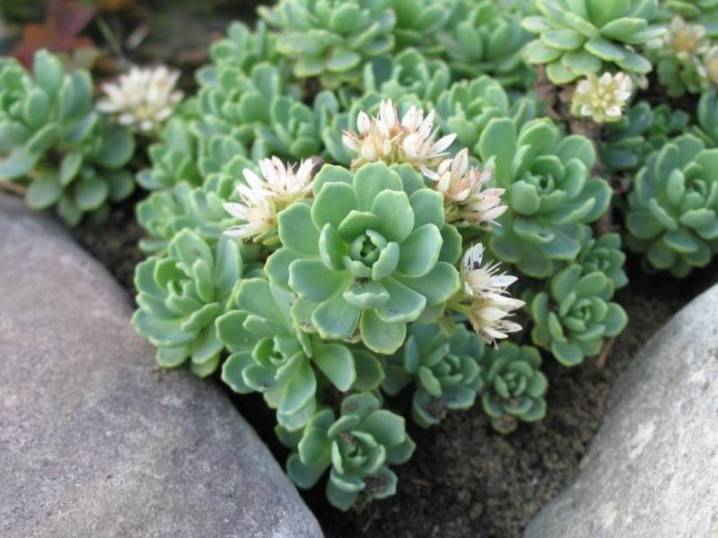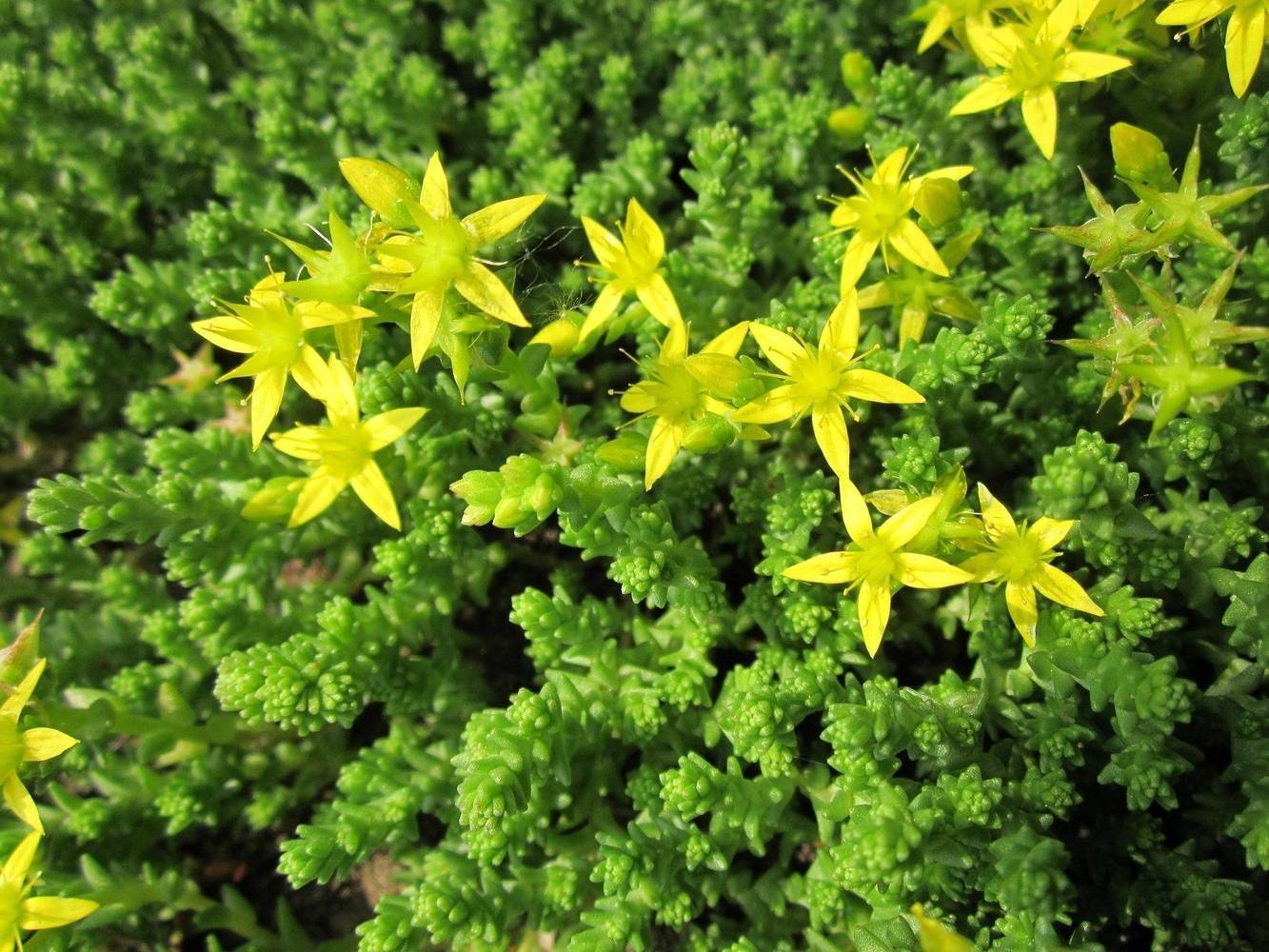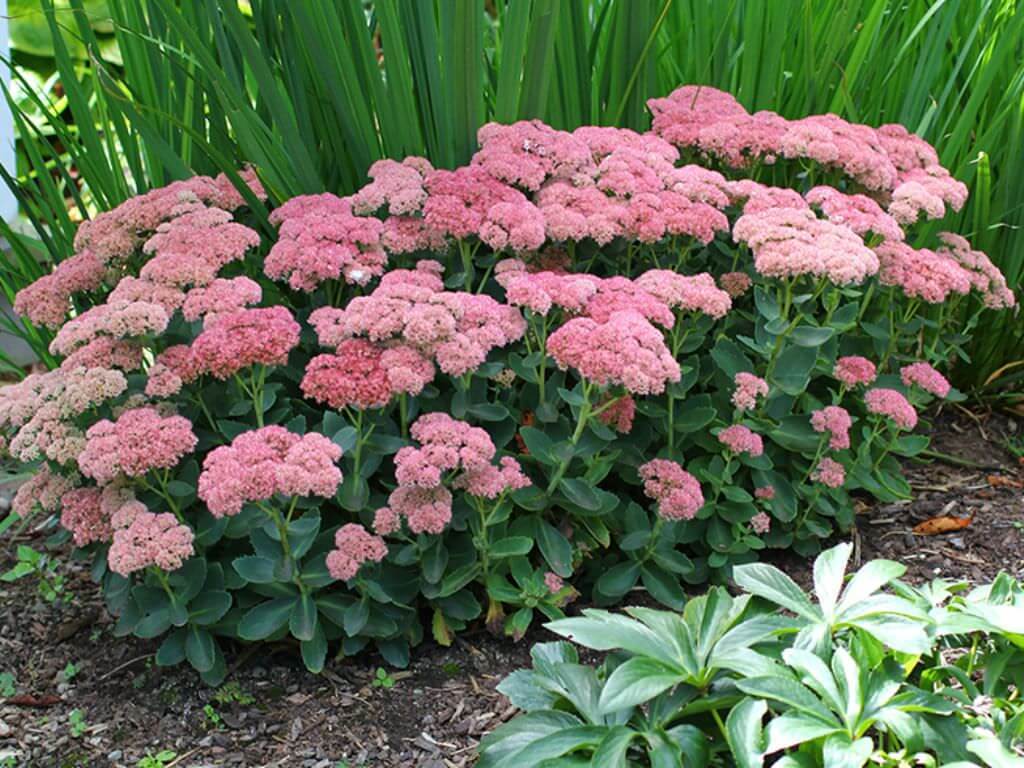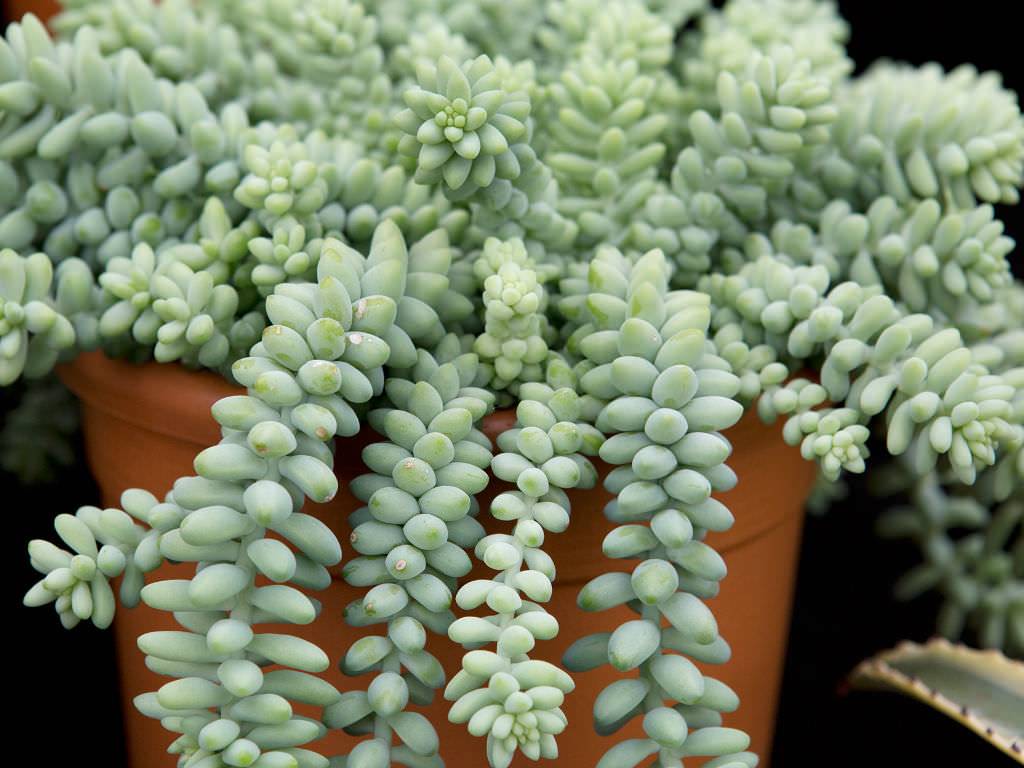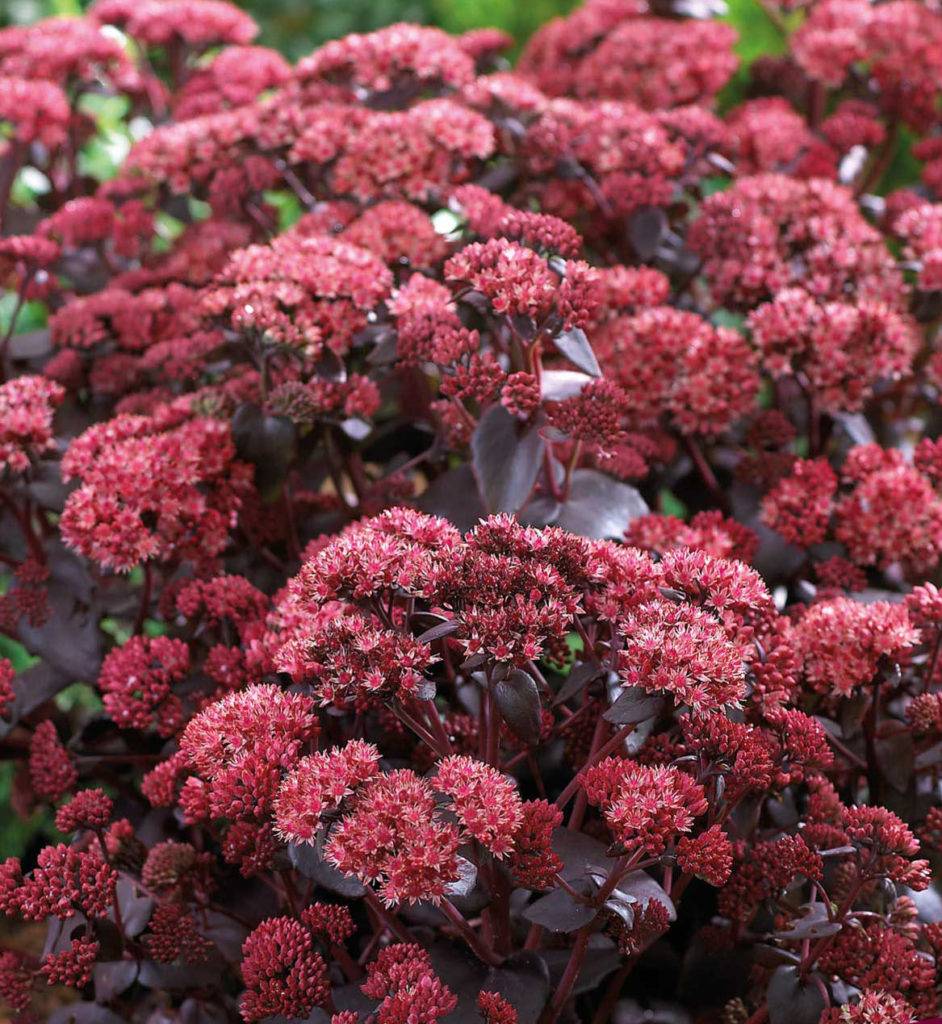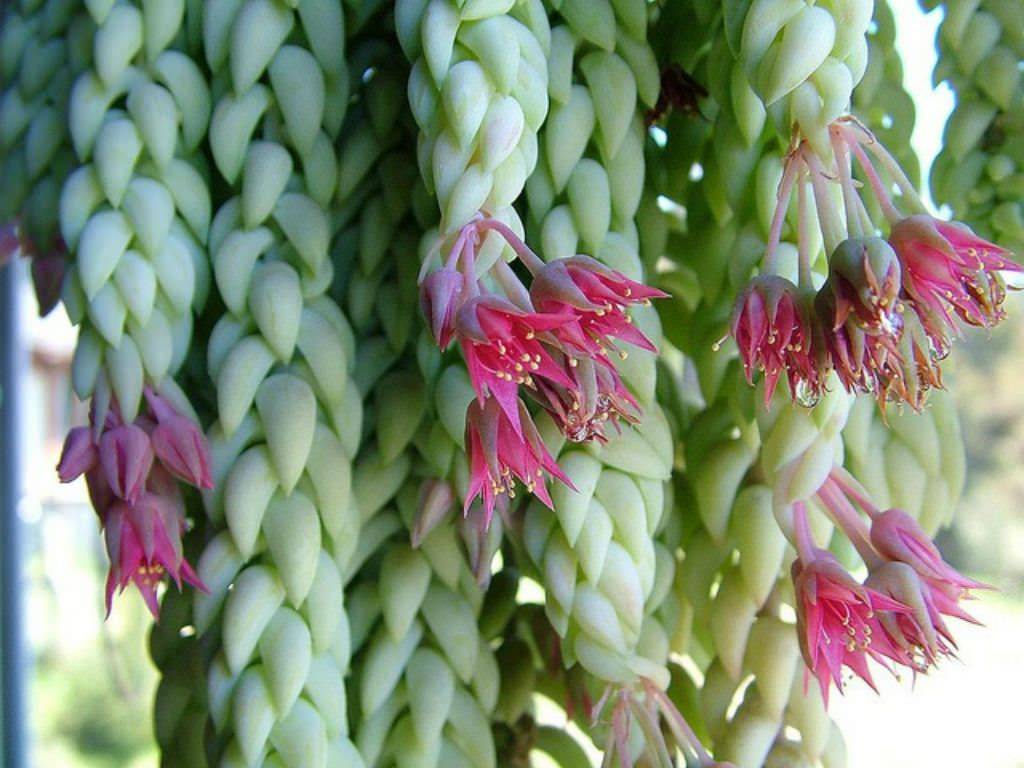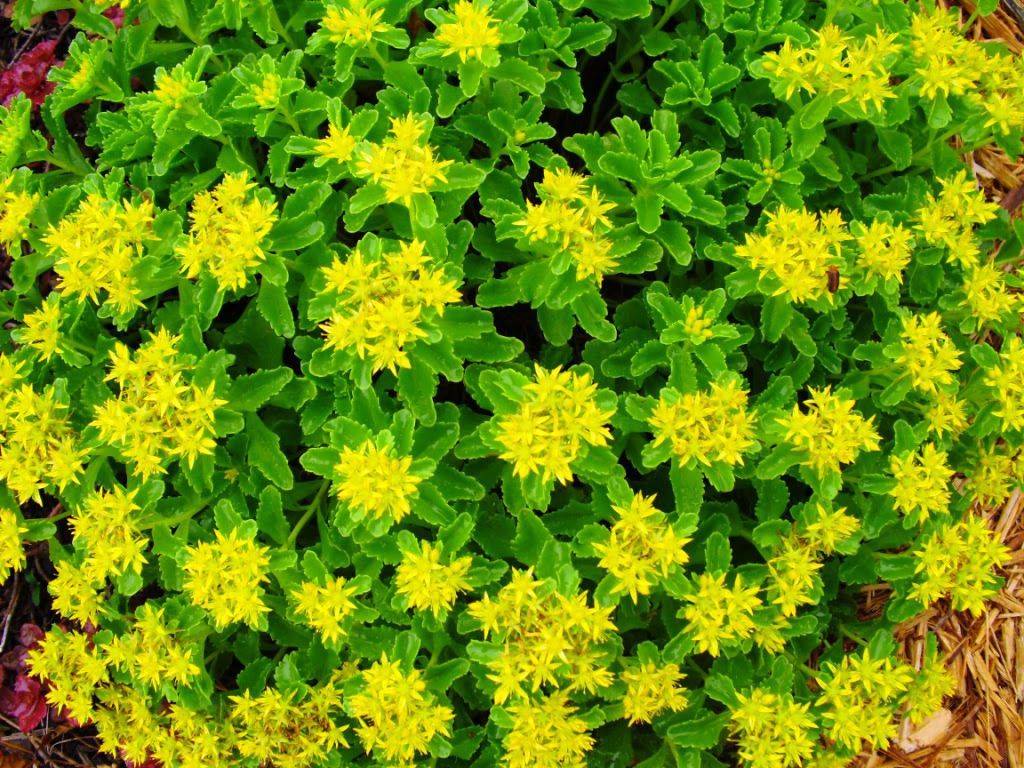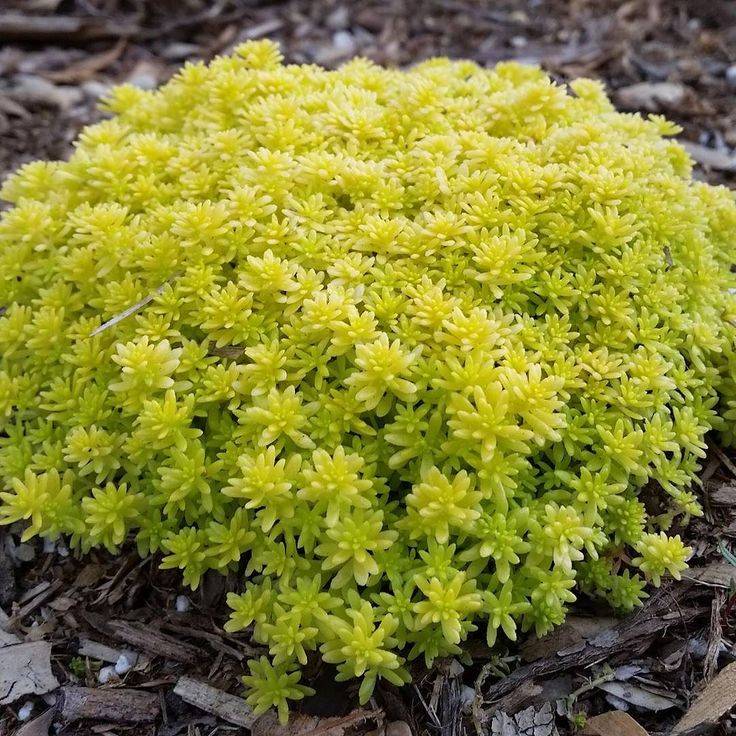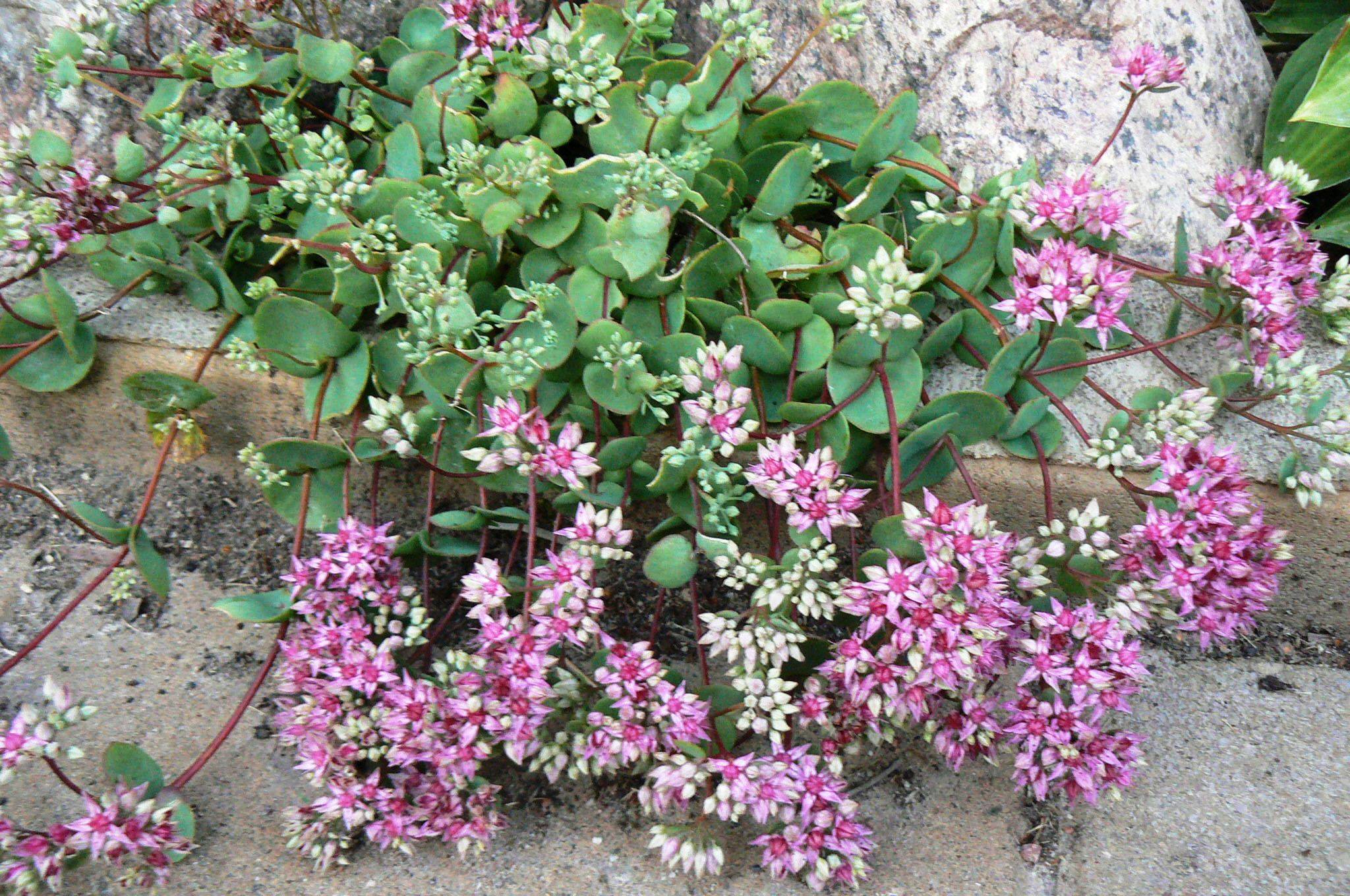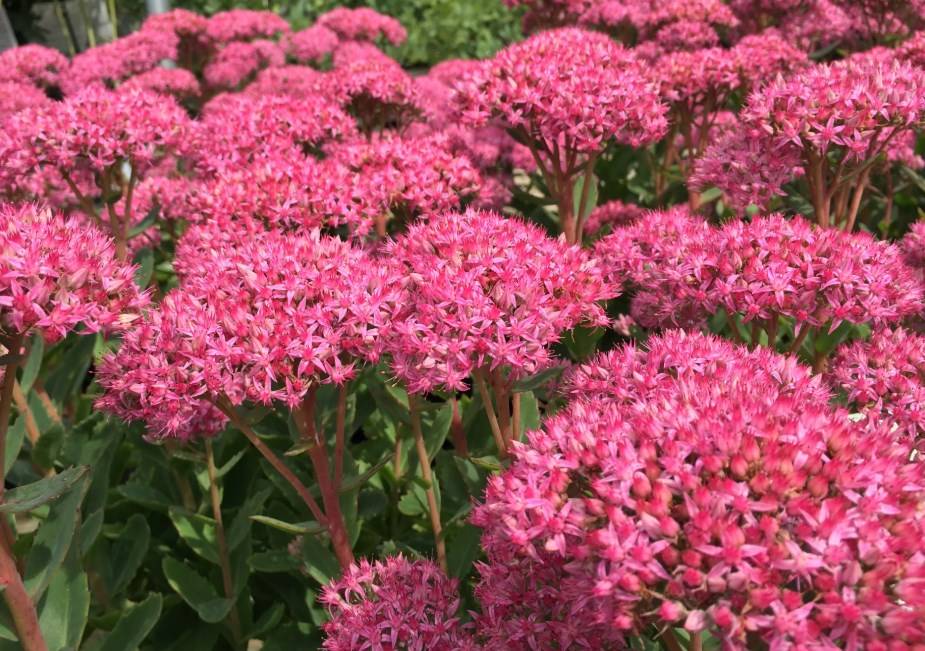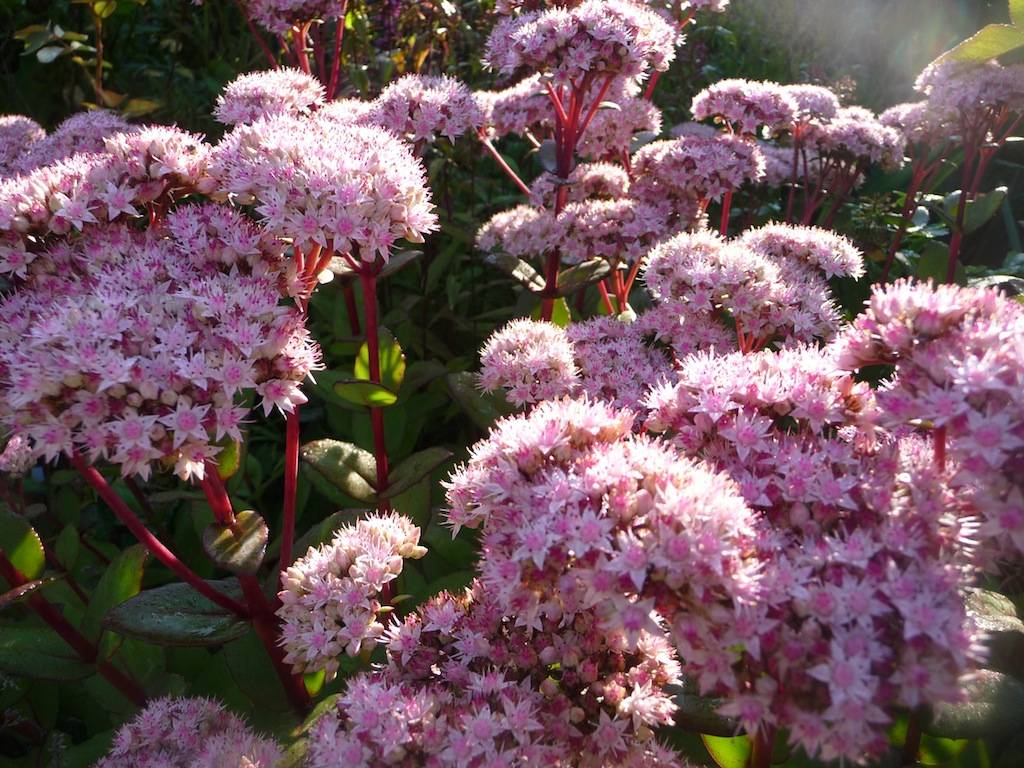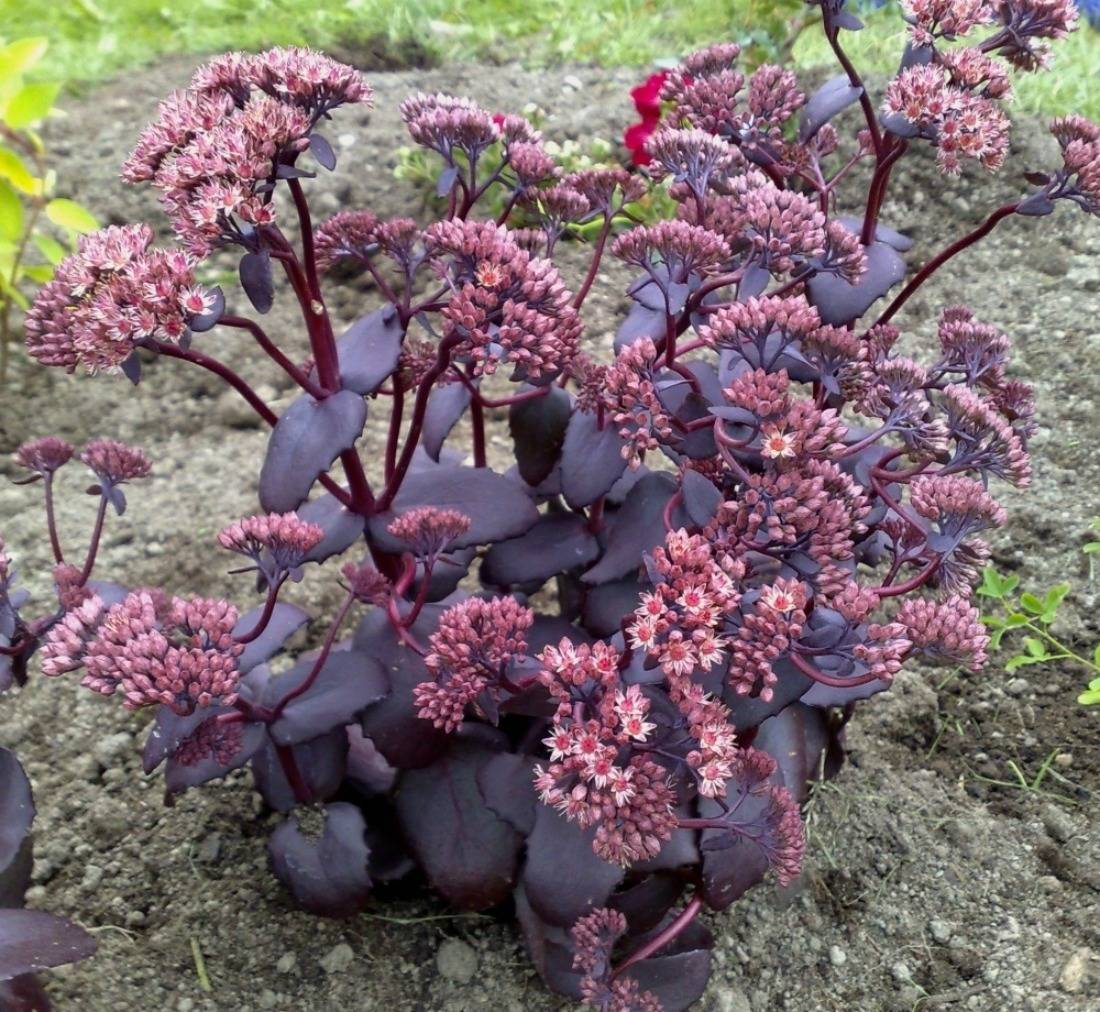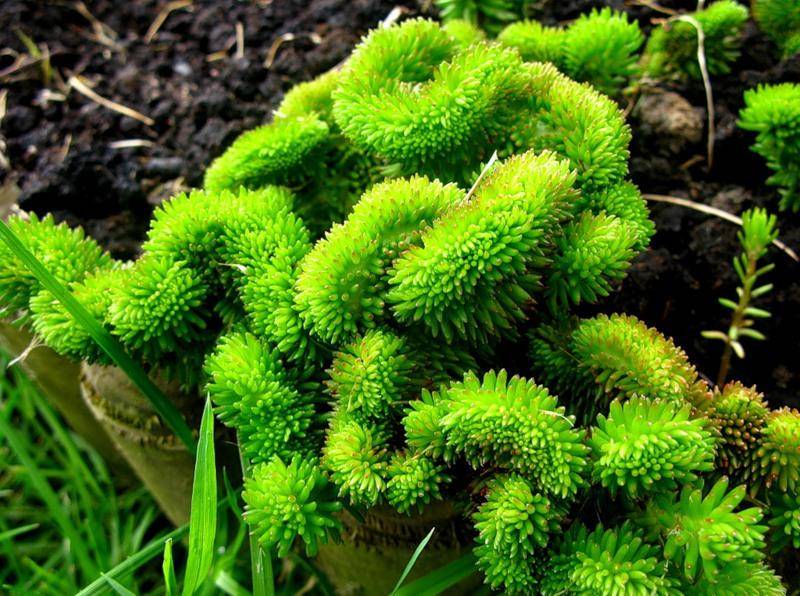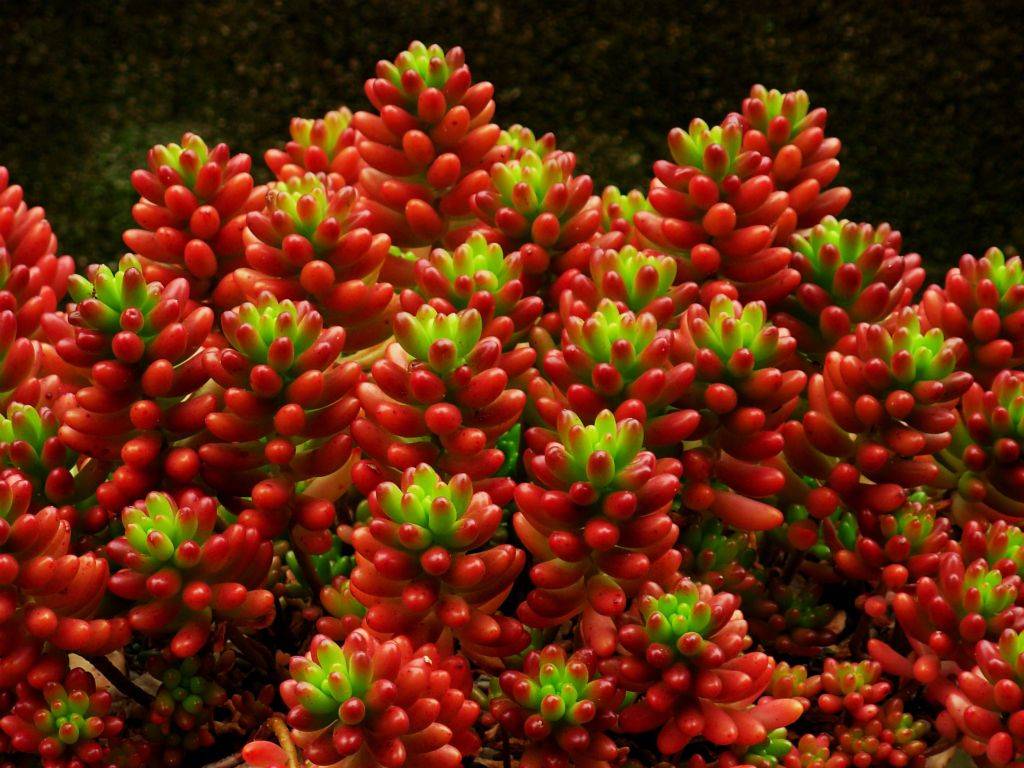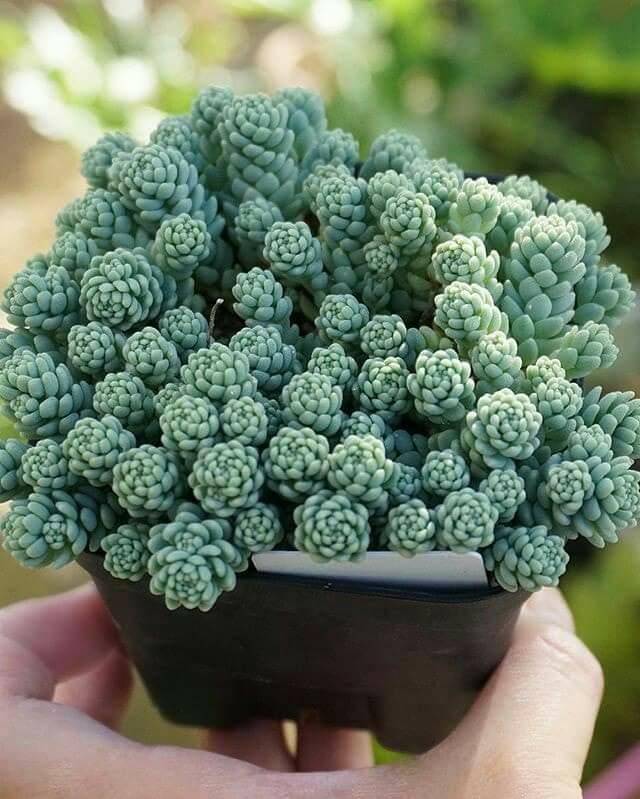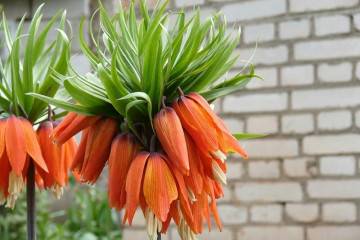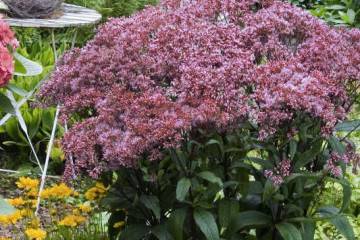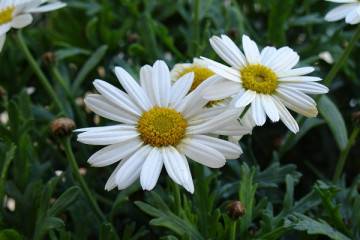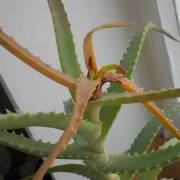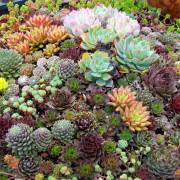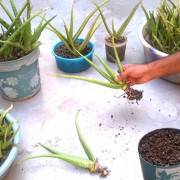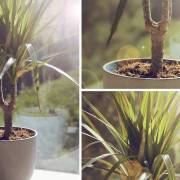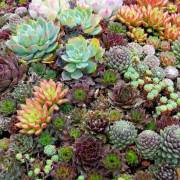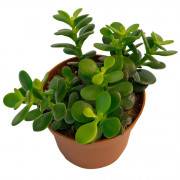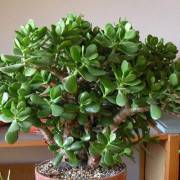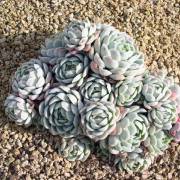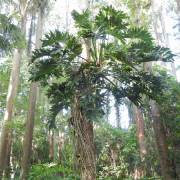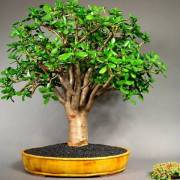Sedum: planting and care outdoors or at home
Content:
The sedum succulent plant, planting and caring for which does not take much time, effort and financial costs, is rapidly gaining popularity among gardeners. Due to its excellent decorative qualities, the plant is grown both in personal plots and in houses. But, before breeding a culture at home, you need to familiarize yourself with the existing varieties and features of their cultivation.
What sedum looks like
The sedum flower is a perennial and frost-resistant plant. It tolerates the harsh Russian climate quite calmly, on the contrary, high temperatures affect them much more harmful.
The plant is distinguished by its originality, but single plantings will not be able to transform the backyard. They look most advantageous in group plantings.
Sedum, sedum are different names for one plant, they include more than 600 varieties. Refers to ground cover crops, a characteristic feature of which is the absence of an erect stem.
The homeland of the ornamental plant is considered to be South America, North Africa and some regions of Russia. This culture is also known under the names of hernia grass, live grass, squeaky, stone rose, rejuvenated, fat woman and hare grass.
Common varieties
As mentioned earlier, sedum will not suffer when it grows at home. The culture does not need abundant watering, and with the onset of winter it is even better to leave it alone. A large number of varieties allows you to choose the most suitable plant in a particular case. For example, it can be one large flower, the stems of which will hang from an ornamental pot, or a low ground cover crop in the form of a standing shrub.
The most common and safe types of sedum are described below.
Sedum caustic is an ornamental plant with a thin rhizome and stems no more than 15 cm long. The leaves are green, ovoid, and their structure is fleshy. During flowering, miniature golden-yellow flowers are formed, exuding a delicate and pleasant aroma.
Sedum prominent is a succulent characterized by the presence of fleshy shoots, the height of which does not exceed 30-50 cm. During flowering, pale pink flowers are formed, collected in false umbrellas. The leaves are colored gray-green, their shape is oval-toothed. The most popular varieties are Blue Pearl and Brilliant. The height of an adult plant does not exceed 20 cm.
Sedum Burrito is a dwarf plant with stems spreading over the surface or hanging down. The color of the leaves is olive, the shape is round, the diameter is about 1 cm. It has much in common with the Morgan sedum.
Hybrid sedum belongs to the group of low-growing plants. In the process of growth, branching stems are formed, dotted with large green foliage.
Morgan's sedum is native to South and Central America.Visually, it is a long hanging stems with dense cone-shaped leaves of a light green color. The diameter of the leaves is 0.8 cm, and the length is not more than 3 cm. During flowering, miniature inflorescences of pink color are formed.
The sedum white has excellent decorative properties and looks great in a pot on a windowsill. The height of an adult plant does not exceed 15 cm. The leaves are elongated. They are green in color, and with the arrival of autumn, the color changes to red.
False sedum is another representative of creeping succulents. Turkey, the northern part of Iran, Georgia and western Armenia are considered to be their homeland. The height of the plant ranges from 5-25 cm. The leaves are wedge-shaped, the length is not more than 2.5 cm, and the width is 1 cm, their color is dark green. During flowering, a large number of small flowers are formed, which are collected in inflorescences of pink, crimson and purple colors.
Kamchatka sedum is a perennial plant, the height of which fluctuates within 40 cm. The leaves have an oblong toothed shape, the length is not more than 3 cm. During flowering, miniature orange flowers are formed, collected in inflorescences. With the arrival of cold weather, the aerial part dies off, only the rhizome remains.
Sedum yellow is a species of the genus Zhivunchik. The height of the lodging stems of a light blue color can reach 20 cm. During flowering, small flowers are formed with a bright yellow color.
Sedum Eversa is a perennial creeping succulent that forms stunted shrubs in the process of growth and development. The leaves are characterized by a rounded shape, their diameter is no more than 2 cm. The formed inflorescences can have purple, raspberry and pink colors. The length of the rhizome is quite large and ranges from 10-25 cm with a large number of branches, which lignify over time.
Sedum Karl has erect stems, which are covered with large leaves of a rich dark green color, their shape is oval. During flowering, flowers of a bright pink color are formed. The height of an adult plant can reach 50 cm. The succulent is not picky about watering, but needs good lighting. A characteristic feature is excellent indicators of frost resistance.
Sedum Matrona is a bright representative of high shrub species. An adult plant reaches a height of 60 cm, formed by a dense bush. The powerful stems are purple in color. The leaves are in gray-green tones, they are elongated and dense, up to 6 cm long. Large inflorescences in diameter can reach 12-15 cm, having a pale pink color.
Sedum Purpl Emperor is the largest plant of the genus, the width of an adult specimen can reach 80 cm, and a height of 60 cm. The succulent got this name due to the color of its foliage, which is purple-red. The shape of the leaves is oval. During flowering, numerous flowers of rather large sizes of pink color are formed. The frost resistance indicators are excellent.
Spanish sedum is a ground cover crop, which in the process of growth forms a dense carpet about 10 cm high. A distinctive feature of the species is the variability and variability of the form, life expectancy and flowering time. For example, foliage can range in color from bluish green to red. With abundant light, a pink tint begins to predominate in the color of the leaves.
Bent sedum is an evergreen crop that has short shoots, no more than 20 cm. On the surface of the soil, it forms a coating that visually resembles a carpet. The stems are covered with green leaves.During flowering, umbrella-shaped inflorescences of yellow color appear.
Sedum Rubrotinktum is an unusual plant due to the non-standard color of the leaves, they are white-pink. During the breeding season, the color changes to red-green. Distinctive features are slow development and growth.
Sedum Dasiphyllum is one of the representatives of ground cover plants, shoots are formed with a diameter of 0.5 cm.The leaves are bluish in color, their shape is spherical, the size is 1 mm in diameter.
These are just the main representatives of stonecrops, which are grown in personal plots and in indoor pots.
Features of home care
Most varieties of this plant are intended for home cultivation. They are able to grow and develop even in the most extreme, it would seem, conditions. In order for the plant to please the owner for a long time, it is enough to follow a small set of rules.
Temperature
In the summer months, the optimal temperature regime is 25-28 ° C. In winter, it is better to adhere to a temperature of 10-15 ° C. At higher rates, shoots can begin to deform and stretch.
Lighting
Despite the excellent indicators of frost resistance, the plant is photophilous, and it is better to place it on the sunny side of the house / apartment. In winter, the most suitable place is a heated balcony or windowsill.
Watering
Succulents do not need frequent and abundant watering, on the contrary, excess moisture will lead to rotting of the root system. The optimal frequency of watering in the summer months is twice a week, in winter - once every two weeks.
Humidity
Sedum feels best at low air humidity, that is, when it is dry. There is no need to irrigate the leaves for the purpose of moistening; such a procedure can be carried out only to remove accumulated dust.
Soil and top dressing
You can purchase a ready-made mixture that is specifically designed for succulents. If this is not possible, you can prepare a suitable soil mixture yourself.
This requires:
- Mix sheet and sod types of soil, add crushed coal and broken brick.
- Add sand and rotted foliage to 2 teaspoons of peat.
In spring and summer, the optimal frequency of top dressing is 1 time per month. Additionally, you can use special mineral fertilizers designed for succulents.
When and how it blooms
Depending on the variety and variety of stonecrop, the flowering period is different. As a rule, this happens in late spring - early summer. Small flowers form into lush inflorescences, the color can be very diverse: red, crimson, pink and white. It is possible to achieve flowering at home only with strict adherence to the growing rules.
Reproduction methods
Reproduction of an ornamental plant can be carried out in two ways:
- seeds;
- cuttings.
The implementation of each has its own characteristics.
Growing from seeds
With the help of planting material, it is possible to grow rare plant varieties, but this is not easy to do. Breeding plants with seeds is a complex and time-consuming process.
The right time for sowing is spring or autumn. First, you need to prepare the soil by introducing peat and sand into it and watering everything well. After sowing, cover with foil or glass to maintain optimal temperature conditions.
Rooting cuttings
Rooting cuttings is an easier option. It is enough to separate a part or a small shoot from an adult plant, dry it a little and plant it. In this case, it is important to adhere to the optimal temperature regime (23-25 ° C) and regularly moisten the soil. Two weeks are usually sufficient for rooting.
Having familiarized yourself with the peculiarities of planting and caring for stonecrop in the open field and in pots, you can decide whether or not to grow this succulent. There really is plenty to choose from. The main thing is to really assess the conditions for the future maintenance of the flower.
